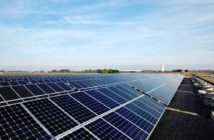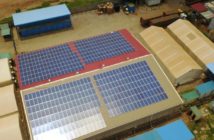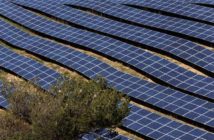EVworld

What is there in human nature that relishes, at least some of the time, being mean spirited to others? Jealousy? Envy? Ego?
Take the recent Blick interview with Bertrand Piccard, the Swiss psychiatrist and adventurer, who along with his partner Andre Borschberg, is developing a solar-powered plane to fly around the world in 2014. Under the headline that translates something like, “My CO2 balance is a catastrophe,’ the interviewer starts off accusatively asking Piccard why he isn’t at the Rio Earth Summit.
After discussing the need to invest in clean technologies, Piccard is asked what he does to improve his environmental footprint. Based on Google’s translation of the German language article, Piccard supposedly responds, ‘My CO2 balance is catastrophic when one considers that the Solar Impulse is built to fly a single pilot to the world. It would be better to use a scheduled flight.’
Scandalous indeed.
So, what did he mean by this? That he doesn’t practice what he preaches?
To the contrary, it would appear that in his personal life, his family life, Bertrand Piccard, in fact, does live by what he believes. He explains, ” I live by this philosophy and in everyday life, [I] drive a hybrid car, live in an insulated house, heated to a maximum of 20 degrees (C), use energy saving light bulbs and so on.”
It seems to me that Piccard’s point about CO2 balance is really about the embodied energy that it took to create the two Solar Impulse aircraft (HB-SIA and HB-SIB), in the first place: their fuselages, massive wings the span of an Airbus 340, the 12,000 solar cells that line the upper surface of those wings and stabilizer, the motors, batteries, communications and navigation equipment that keeps the plane on track and lets the world watch the flight in real time; not to mention the support team in Switzerland, and in Morocco where it safely flew yesterday, June 21st, from Rabat to the desert town of Ouarzazate.
If the Solar Impulse were simply another rich man’s toy, then I suppose the argument could be made that Piccard’s carbon footprint is catastrophic. But that’s not the point.
When asked “what’s your excuse”? Piccard replied, “We want to demonstrate that the technologies with which an aircraft can fly day and night without fuel, and in everyday life are available to the household, while driving, with the lighting, etc. to save energy.”
In order words, if just the light from the sun can propel an aircraft hundreds of miles at altitudes of 28,000 feet for hours, even days on end, then it’s certainly capable of lighting homes, running appliances, propelling cars.
At the moment, a solar-powered airplane is a fragile machine. Its airspeed less an 100 km/hr. It can only take-off and land when winds on the ground are less than 5 mph. The SolarImpulse is, in a way, a giant ultralight that must seek the smoothest air and constantly stay above the clouds to keep its batteries charged. It is a product of the realities of diffuse, but life-sustaining solar energy.
This is why It took Borschberg, an experienced jet fighter pilot, two attempts to fly out into the desert over the last week. The first attempt to fly to the remote desert town that will be the site of one of the world’s larger solar farms ran into unexpected headwinds and turbulence over the Atlas Mountains and was forced to return to Rabat. The second flight succeeded by flying along the Moroccan coastline well south of Casablanca and then turned inland south of the Atlases. When it did finally arrive over Ouarzazate, it was forced to loiter for hours above Al-Manour Ad-Dahbi Lake until 11:30 at night when winds died down enough for a safe landing. That flight took more than 17 hours and covered less than 700 km. For all its advanced technology, man and machine are still very much at the mercy of the elements.
From a cynic’s point of view, the entire enterprise may seem as pointless as circumnavigating the globe in a balloon: some spoiled rich guy trying to live up to his family’s legacy. But for Bertrand Piccard and Andre Borschberg it’s not about the glory, but the trying. Several times in interviews Piccard has conducted during this Crossing Frontiers mission to fly from Switzerland to Morocco, he’s talked about there being no shame in failing, just in never trying. In the Blick interview he more or less sums up the purpose of the whole SolarImpulse endeavor by explaining that “many people are afraid to let go of the familiar and to try new things. But there is no good reason to blame them. You have to encourage and promote their confidence.”
Flying a big, lumbering, solar-powered kite across mountains, deserts and oceans, aims to do precisely that.
Opinion pieces denote the opinions of the author, and do not necessarily represent the views of EV World.
Originally published: June 23, 2012 | Total Page Views: 491
.






